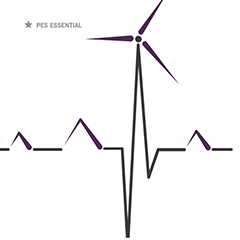The results are in and they tell us what we knew all along: there is no evidence that wind turbines make humans sick. Surprised? Nor us. The only surprise is how much bad information there is out there about wind power and health…
There is no reliable or consistent evidence that proximity to wind farms or wind farm noise directly causes health effects. That’s the finding of Australia’s National Health and Medical Research Council’s (NHMRC) much-anticipated draft systematic review of the evidence on wind farms and human health. The study looked at all the relevant reviews published on the issue since 2003 to 2013 – and all have reached the same broad conclusions.
The NHMRC investigators also found consistent but poor-quality evidence that proximity to wind turbines was associated with annoyance and, less consistently, with sleep disturbance and poorer quality of life.
But finding an association between wind farms and these health-related effects does not mean that wind turbines cause these problems. These associations could be due to selection or information bias or to confounding factors.
Some poor-quality studies, for example, include only people with complaints, failing to consider the many who are not upset by turbines. And anti-wind farm activists’ efforts to spread fear among communities may cause people who anticipate they will be adversely affected to worry themselves sick.
It is unlikely that substantial wind farm noise would be heard at distances of more than 500 metres to 1500m away, the report concludes, though noise levels vary with terrain, type of turbines and weather conditions.
But when it can be heard, noise from wind turbines, including its content of low-frequency noise and infrasound, is similar to noise from many other natural and human made sources. There is no evidence that health or health-related effects from wind turbine noise would be any different to those from other noise sources at similar levels.
People exposed to infrasound and low frequency noise in a laboratory (at much higher levels than those to which people living near wind farms are exposed) experience few, if any, effects on body functioning.
On the possibility that the “shadow flicker” produced by wind turbines might trigger epilepsy, the investigators found insufficient direct evidence to draw any conclusions.
Flashing lights can trigger seizures among people with a rare form of epilepsy called photosensitive epilepsy. But the risk of shadow flicker from wind turbines triggering a seizure among people with this condition is estimated to be very low.



























